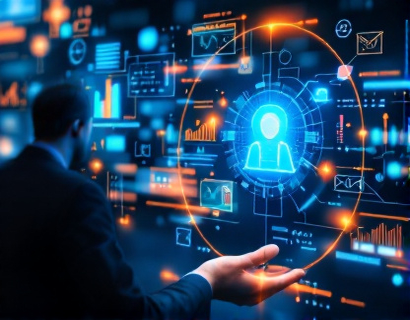In the rapidly evolving landscape of technology, artificial intelligence (AI) has emerged as a transformative force across industries. One of its most impactful applications lies in education and specialized knowledge sharing. Modern AI-driven platforms are redefining how individuals of all ages access information, learn new skills, and engage with complex subjects. By combining advanced algorithms with user-friendly interfaces, these systems create opportunities for personalized learning, real-time problem-solving, and the democratization of expertise. This article explores the role of AI in delivering specialized industry knowledge and educational content, with a focus on safety, accuracy, and accessibility for learners of all ages.
The Role of AI in Modern Education and Industry
AI has become a cornerstone of modern education and professional development. Traditional learning methods often rely on static resources such as textbooks or pre-recorded lectures, which can quickly become outdated in fast-moving fields. AI-powered platforms, however, offer dynamic, interactive experiences that adapt to individual learning styles and pace. For professionals, these systems provide up-to-date insights into industry trends, regulatory changes, and technical advancements. In sectors like healthcare, engineering, and finance, AI tools enable users to simulate real-world scenarios, analyze case studies, and receive instant feedback, bridging the gap between theoretical knowledge and practical application.
Ensuring Accuracy and Reliability in AI-Generated Content
A critical challenge for AI platforms is maintaining the accuracy and reliability of the information they provide. To address this, leading systems employ multi-layered verification processes. These include cross-referencing data with trusted sources, integrating real-time updates from industry databases, and incorporating human oversight. For example, a medical AI tool might validate its responses against peer-reviewed journals, clinical guidelines, and expert-curated knowledge bases. This rigorous approach ensures that users—whether students, professionals, or casual learners—can trust the information they receive. Additionally, many platforms use feedback loops, allowing users to report inaccuracies, which are then reviewed and corrected to improve the system’s performance over time.
Child-Friendly AI: Balancing Safety and Engagement
Creating AI tools for younger audiences requires a unique approach. Child-friendly platforms prioritize safety by implementing strict content filters, age-appropriate language, and safeguards against inappropriate interactions. These systems often use natural language processing (NLP) models trained to recognize and respond to the developmental needs of children. For instance, a science-focused AI might simplify complex concepts into bite-sized explanations, using analogies and interactive elements like quizzes or visual aids. Parental controls are another key feature, allowing caregivers to monitor usage, set time limits, and customize content based on their child’s learning goals. By fostering curiosity in a secure environment, these platforms encourage lifelong learning habits while protecting young users from potential risks.
Applications Across Age Groups and Industries
For Students and Lifelong Learners
Students of all ages benefit from AI’s ability to personalize education. An AI tutor can assess a learner’s strengths and weaknesses, tailoring lessons to fill knowledge gaps. For example, a high school student struggling with algebra might receive step-by-step problem-solving guidance, while a college student studying literature could explore AI-generated analyses of classic texts. Adult learners, too, use these platforms to acquire new skills, such as coding or digital marketing, through interactive modules that adapt to their progress.
Professional Development and Industry-Specific Training
In the workplace, AI platforms serve as on-demand mentors. Engineers might use them to troubleshoot technical challenges, while healthcare professionals could simulate patient interactions to refine diagnostic skills. Legal professionals, meanwhile, might rely on AI to analyze case law or draft contracts. These tools not only enhance productivity but also reduce the time and cost associated with traditional training programs. By providing instant access to specialized knowledge, AI empowers workers to stay competitive in fast-paced industries.
Interdisciplinary Learning and Collaboration
AI’s ability to synthesize information from multiple disciplines fosters innovation. A user researching renewable energy, for instance, might receive insights that combine environmental science, engineering, and economics. Collaborative features, such as shared virtual workspaces, enable teams to brainstorm ideas, analyze data, and solve problems collectively, regardless of geographic location. This interdisciplinary approach mirrors the interconnected nature of real-world challenges, preparing users to think critically and creatively.
Addressing Challenges and Ethical Considerations
Despite their potential, AI platforms face challenges. Data privacy remains a concern, particularly for younger users. Reputable systems address this by anonymizing data, encrypting communications, and complying with regulations like the Children’s Online Privacy Protection Act (COPPA). Another challenge is algorithmic bias, which can lead to inaccurate or skewed information. Developers combat this by training models on diverse datasets and conducting regular audits. Additionally, the digital divide—unequal access to technology—limits the reach of AI tools. Initiatives to provide affordable internet access and low-cost devices are essential to ensuring equitable educational opportunities.
The Future of AI in Education and Knowledge Sharing
As AI technology advances, its applications in education and industry will expand. Future platforms may integrate augmented reality (AR) and virtual reality (VR) to create immersive learning environments. Imagine a biology student exploring a 3D model of a cell or a history enthusiast virtually visiting ancient civilizations. Improvements in natural language processing will enable more nuanced conversations, allowing users to ask complex, multi-part questions and receive detailed explanations. Furthermore, AI could play a pivotal role in addressing global challenges by facilitating cross-border collaboration and accelerating research in fields like climate science and public health.
Conclusion
AI-driven platforms represent a paradigm shift in how we access and engage with knowledge. By offering accurate, specialized content in a secure and interactive format, these tools empower individuals to learn at their own pace, explore new fields, and stay informed in an ever-changing world. For children, they provide a foundation for curiosity and critical thinking, while professionals benefit from on-demand expertise that enhances their skills. As technology evolves, the focus must remain on ethical development, inclusivity, and maintaining the human element in education. When designed responsibly, AI has the potential to unlock unprecedented opportunities for learners of all ages, fostering a more informed and innovative society.










































